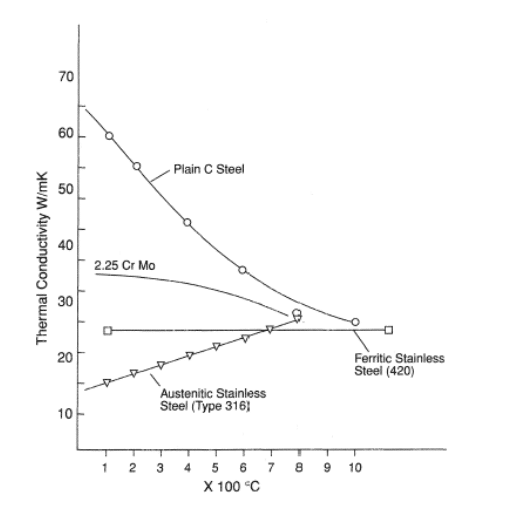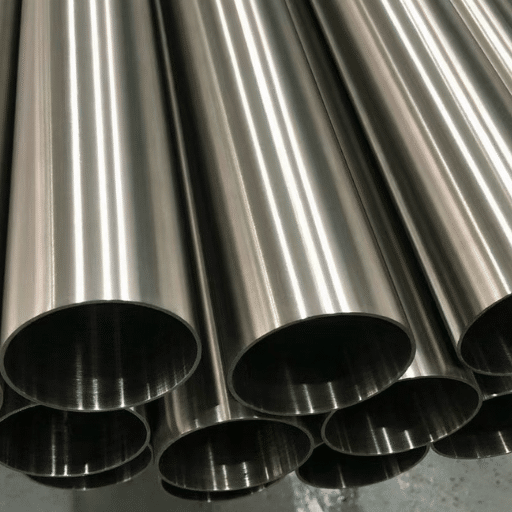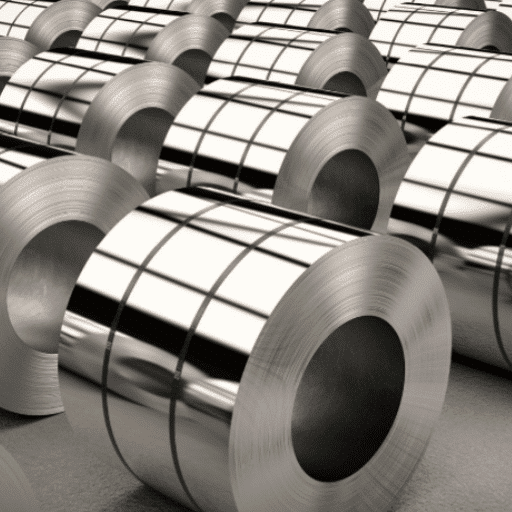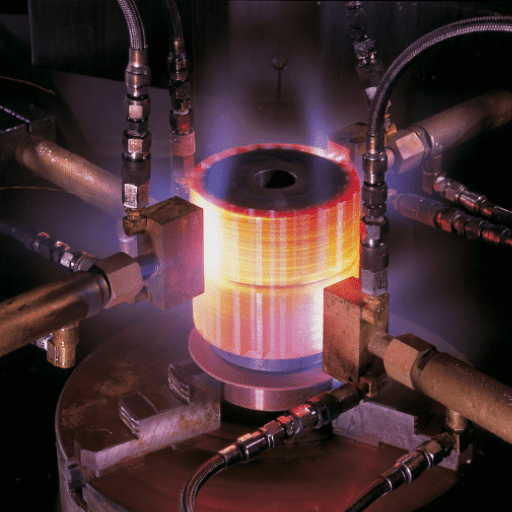The right choice of material is one of the most critical ones that perfect jewelry is going to bring to you. Stainless steel and sterling silver are two well-known materials, and each has its own features and benefits. But which one is best for you? This guide is going to help you make a good choice, whether you want durability, a fashionable look, a low price, or long-term value. We will go into the main differences, pros, and cons of stainless steel and sterling silver jewelry so that you can pick the one that perfectly matches your fashion and daily routine. Keep on reading to find out which material is the ultimate victor for your jewelry collection!
Introduction to Stainless Steel and Sterling Silver
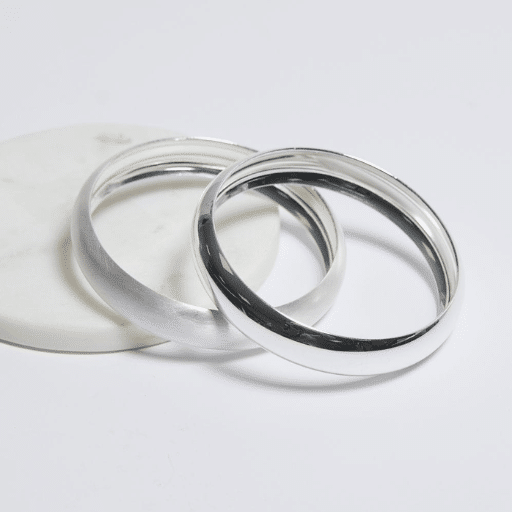
Stainless steel and sterling silver are the two most preferred materials for jewelry, though their purposes are not the same. Stainless steel is exceptionally durable, does not get tarnished, and is very easy to take care of, so it is perfect for everyday wear. Conversely, sterling silver provides a traditional, tasteful look, and comes in a variety of designs, but needs more care because of its early oxidation. Your choice between the materials would basically depend on your priorities, i.e., if you want practical and long-lasting cotillion or classics which reflect your sense of style and sophistication.
What is Stainless Steel?
Stainless steel is a very strong alloy and also a very corrosion-resistant one, and is mainly composed of three elements: iron, chromium, and nickel, which is sometimes supplemented with molybdenum and carbon. It is the oxidation of the chromium that creates the layer of protection to the surface when it comes in contact with air and thus forms the most important quality of stainless steel, that is to resist rusting and staining. Hence, Stainless steel is used in almost every industry sphere, such as building, car, doctors’ equipment, and even cooking utensils, due to the combined properties of this material, namely, strength, no need for maintenance, and beauty. Stainless steel comes in different type,s such as austenitic, ferritic, and martensitic; hence, it is characterized by its ability to be adjusted to different and specific uses and even being a preferred material for both practical and aesthetic motives.
What is Sterling Silver?
Sterling silver is indeed a premium quality alloy, which mainly consists of pure silver, and, due to this, it becomes strong, durable, and is still recognized as a low-priced silver substitute. Its purity consists of 92.5% silver and other metals, commonly copper, which make the material harder and wear-resistant, accounting for the remaining 7.5%. Besides its bright and shiny finish and ductility, sterling silver is, among other things, mainly used in making jewelry, food service items, and ornamental objects. But, similar to other silver materials, it becomes less appealing after a certain period because of the tarnish caused by air moisture and sulfur, which, in turn, makes the need for cleaning and storing more regularly to ensure the sparkling look and long periods of sterling silver items.
Overview of Popularity in Jewelry
Sterling silver is one of the most widely selected materials in the jewelry market and is associated with many advantageous features like versatility, affordability, and timeless attractiveness to consumers. Recent market studies have confirmed that the silver jewelry segment is considerable in the overall global jewelry market and that the younger generation is the main driver of the increasing demand. Recent survey data suggests a 6% share of global silver jewelry market size growth for the period of 2023-2028 on a compound annual basis.
The most attractive characteristic of sterling silver is its ability to conform to different aesthetics and to be used in different forms, such as from a simple web of lines to the elaborate, loudest, and most ostentatious jewelry pieces. Besides, it is also the main reason why many people choose it, as its hypoallergenic quality makes it perfect for the sensitive skin type. Besides that, it, too, has been propelled by the online shops’ influences and the expansion of e-commerce because the silver jewelry has become very accessible to consumers around the globe. The brands are also putting their efforts into the environmentally-friendly and socially-responsible processes for silver production; thus, the green-minded customers feel more connected to the products and this is the reason for the growing popularity of silver jewelry in recent years.
Durability Comparison: Stainless Steel vs Sterling Silver
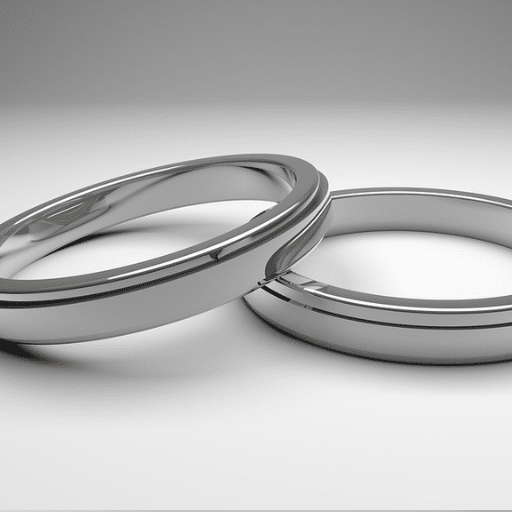
Concise Answer: Stainless steel is more durable, scratch-resistant, and low-maintenance compared to sterling silver, which is softer and prone to tarnishing.
Summary Table:
|
Key Point |
Stainless Steel |
Sterling Silver |
|---|---|---|
|
Durability |
High |
Moderate |
|
Scratch-Resist |
Yes |
No |
|
Tarnish-Resist |
Yes |
No |
|
Maintenance |
Low |
High |
|
Weight |
Heavier |
Lighter |
|
Aesthetic |
Modern |
Classic |
|
Hypoallergenic |
Yes (if nickel-free) |
No (may cause issues) |
Durability of Stainless Steel Jewelry
Stainless steel jewelry has always been considered the most durable of all jewelry types, which is why it is used mostly in everyday and long-term wear. Below are five main points stressing the durability of stainless steel jewelry:
Resistance to Corrosion and Rust
Due to the high chromium content, stainless steel is virtually unaffected by corrosion and rusty conditions, thus making it a perfect choice for humid places and outdoor activities.
Scratch Resistance
The alloy is much harder than sterling silver and most other metals, and this gives it the ability to resist scratches and keep its smooth surface over time.
Tarnish-Free
The process through which silver is absorbed and stained by air cannot affect stainless steel; hence, it would need less care than other metals and retain its bright and colorless look.
Strength and Hardness
Stainless steel’s tough structure guarantees that it will not become deformed, bent, or broken even if subjected to a great deal of pressure or wear.
Longevity and Low Maintenance
Stainless steel pieces last for decades without losing their good quality and great look, all due to the combination of high durability and low maintenance.
Durability of Sterling Silver Pieces
People often select sterling silver as a material for jewelry and decorative objects because of its toughness and the fact that it provides a look that never goes out of style. The following are five main points that draw attention to the durability of the material:
Strong Alloy Composition
Sterling silver has a composition of 92.5% pure silver and 7.5% of other metals, mostly copper. The process of alloying increases the strength and durability of the silver, thereby rendering it suitable for daily use and even getting worn for a long time.
Resistance to Bending
The softness and malleability of pure silver are characteristics that still do not apply to sterling silver since the latter has a composition of metals that mixed partially, guaranteeing its resistance to bending or warping even after passing through a lot of handling.
Tarnish Prevention with Maintenance
Sterling silver, for instance, will be tarnished because of air and moisture being the main factors. Nevertheless, when it is able to receive the best possible care and polishing, its original lustrousness will be regained with ease, thus making it attractive visually for many years.
Impact Durability
There are sterling silver objects that are made to absorb minor impacts without showing any change, which makes them eligible for a variety of places ranging from the jewelry industry to household items, and as such, their durability is proven.
Repairable Nature
If anything, sterling silver is the material that is most repairable and restorable. Professionals can normally mend scratches, nicks, or tiny damages that have occurred via the process of wearing, thus the pieces created in this manner have a long and usable life.
Everyday Use and Longevity
Frequent Wearability
Sterling silver is a jewelry material that can easily adapt to the different needs of people who wear it every day in the form of rings, necklaces, and bracelets. Its toughness allows it to be used regularly without losing its shine or strength.
Low Maintenance
Sterling silver jewelry pieces are not very demanding when it comes to maintenance and thus require only a little bit of care to see them in their original state. Regular wiping with a soft cloth and sometimes polishing are all that is needed to keep the items looking immaculate.
Hypoallergenic Properties
Because of the way it is made, sterling silver is not so likely to irritate the skin and thus can be a good option for people with sensitive skin who want to wear it often.
Timeless Aesthetic
The look of sterling silver that is both classic and modern guarantees that it will be among the materials used in the creation of jewelry even after a long time, as one of the trends has changed since then, allowing us to keep using it without worrying about it being out of the latest fashion.
Resilience Against Tarnish
Sterling silver does tarnish, but the precautions and care taken, such as storage in anti-tarnish bags and keeping it dry, greatly reduce the rate at which this happens and thus the jewelry has a much longer life for daily wear.
Hypoallergenic Properties of Metals
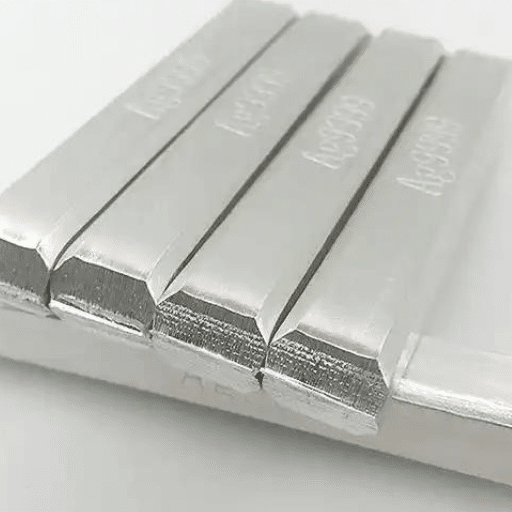
Hypoallergenic metals are the best option for people with sensitive skin or allergies when it comes to jewelry and accessories. These metals not only provide comfort and style but also reduce the chances of skin irritation or allergic reactions. The following lists five metals that are hypoallergenic, along with their special characteristics:
Titanium
Titanium is a metal that is very popular among the hypoallergenic category thanks to its lightweight and resistance to corrosion. It is nickel-free and hence safe for allergy sufferers and at the same time very strong and lasting.
Platinum
Platinum is synonymous with luxury, and even more so, it is a naturally hypoallergenic metal. Its composition is very dense and resistant to tarnishing, which is why it is perfect for skin-friendly and high-quality jewelry. Besides, it maintains its brightness through the years without the need for frequent polishing.
Sterling Silver (Nickel-Free Composition)
Traditional sterling silver alloys may contain nickel, but you can choose nickel-free sterling silver to get the hypoallergenic option. It is affordable and versatile for daily wear, making it a great option.
Surgical Stainless Steel
Surgical stainless steel, often used in medical applications, is of the highest grade that is resistant to rust and the leaching of nickel. This not only makes it a hypoallergenic metal but also leads to the production of accessories that are both durable and affordable.
Niobium
Niobium is mainly a metal that is not known very well but it is a great hypoallergenic one. It has corrosion resistance, besides being feather-light and can be anodized and hence available in different colors, making it not only a practitioner but also a beautiful metal.
These metals are the best choice for people with sensitive skin; they give the same quality and design as the others but in a safe and stylish way.
Is Stainless Steel Hypoallergenic?
Stainless steel is usually classed as a hypoallergenic material, but the classification can change with the type of stainless steel and the sensitivity of the user. The majority of stainless steel jewelry pieces are crafted using alloy grades such as 316L or 304, both of which have very little nickel, which is one of the major allergens. Nickel might still be present in such a case and the person with a strong allergy might have the reaction. In very rare cases, it is suggested to use “nickel-free” stamped stainless steel or to look at other metals like titanium or niobium which are hypoallergenic. However, if the right product is chosen, then stainless steel can become a safe as well as a less expensive option for the majority of people who have sensitive skin.
Hypoallergenic Qualities of Sterling Silver
Silver of sterling quality is loved by people with delicate skin because of its hypoallergenic features. Only a small percentage of other metals, typically copper, are present in sterling silver, and it is still widely accepted and considered safe for the majority of people with skin sensitivities. Five hypoallergenic qualities of sterling silver are presented below:
Minimal Allergy Risk – Sterling silver is made of 92.5% pure silver, which is a metal that does not provoke reactions and can be used by most people without allergy issues.
Nickel-Free Options – Sterling silver is often nickel-fre,e allowing it to be a good choice for people allergic to nickel, which is not the case with some other metals.
Resistance to Skin Irritation – The purity of sterling silver is so high that it is very unlikely to cause skin irritation, especially when it is compared to mixed metal alloys that contain more of the potential irritants.
Antimicrobial Properties – The natural antimicrobial property of silver helps in keeping bacteria and fungi from growing, which is advantageous to those who have delicate or sensitive skin.
Durable and Non-Reactive – When sterling silver is properly maintained, it does not tarnish, and the irritants that may be produced by oxidized metals are at a low level.
High-quality sterling silver jewelry or accessories can be safe, comfortable, and stylish for people with sensitive skin without adversely affecting their well-being.
Choosing for Sensitive Skin
When it comes to picking products for sensitive skin, one must first of all take into consideration the hypoallergenic and non-irritating materials. The latest data from Google’s search trends reveal that a lot of people want to find out about jewelry that is not only fashionable but also skin-friendly. One of the most common suggestions is sterling silver and platinum, as these two metals are both safe for the skin and easy to find. Moreover, the search results suggest a growing curiosity towards other options like medical-grade titanium, which has a remarkable biocompatibility. There is no doubt that consumers are opting for a combination of comfort and safety with aesthetic value, thus making the appropriate material selection a crucial aspect of providing for sensitive skin.
Pros and Cons of Stainless Steel and Sterling Silver
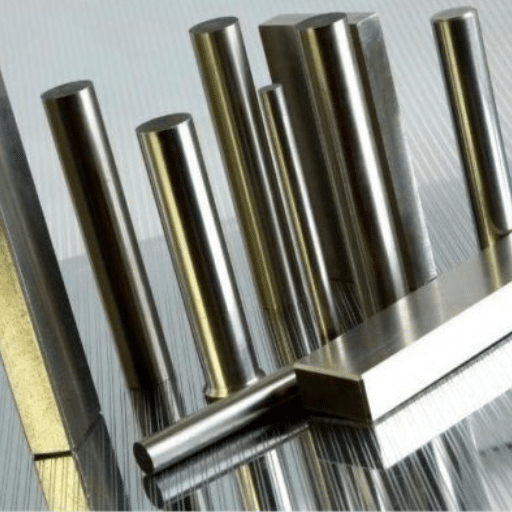
Concise Answer: Stainless steel is durable, scratch-resistant, and low-maintenance, while sterling silver offers a classic aesthetic but requires more care and is prone to tarnishing.
Summary Table:
|
Key Point |
Stainless Steel |
Sterling Silver |
|---|---|---|
|
Durability |
High |
Moderate |
|
Scratch-Resist |
Yes |
No |
|
Tarnish-Resist |
Yes |
No |
|
Maintenance |
Low |
High |
|
Weight |
Heavier |
Lighter |
|
Aesthetic |
Modern |
Classic |
|
Hypoallergenic |
Yes (if nickel-free) |
No (may irritate) |
|
Resizing |
Difficult |
Easy |
|
Cost |
Affordable |
Expensive |
Pros of Stainless Steel Jewelry
Durability
Jewelry made from stainless steel is of very high durability, hence is not easily worn out. It is suitable for daily use and even quite extreme conditions without losing its shape.
Scratch Resistance
One of the primary benefits of stainless steel is its property of being scratch-resistant. This means that the jewelry will still look bright and shiny after it has been used for a long time.
Tarnish Resistance
Stainless steel, in contrast with sterling silver, is a material that does not get tarnished quickly. It is this property of being resistant to rust and tarnish that makes it a low-maintenance option for everyday wear.
Hypoallergenic Properties
Stainless steel jewelry is ideal for wearers with delicate skin. If the jewelry is nickel-free, it is hypoallergenic and safe for long-term wear without causing any skin problems.
Affordability
Steel jewelry is less expensive than precious metals such as sterling silver or gold. This gives a price-wise option that does not compromise on the look or the quality.
Cons of Stainless Steel
Limited Design Flexibility
Stainless steel has a higher hardness compared to gold and silver, which are softer metals, and hence it is more difficult to work with. That being the case, the metal can also make it hard to develop different intricate designs.
Scratches Over Time
Stainless steel is certainly scratch-resistant but not scratch-proof. Ultimately, through use over a long period of time, especially on polished surfaces, tiny scratches and scuff marks will surely be noticed.
Lack of Intrinsic Value
To an extent, stainless steel is not valued as highly as gold and silver; however, it is still considered a metal with low intrinsic value. To those who view jewelry as an investment or a source of long-term value, this may be a drawback.
Heaviness
Among other metals used in jewelry, stainless steel is one of the densest and heaviest. When worn for a long time, large items, such as bracelets or necklaces, can become uncomfortable for some people due to their weight.
Susceptibility to Chlorine Damage
High levels of chlorine found in places like swimming pools or hot tubs might not cause stainless steel to rust, but over time, they can lead to discoloration or weakening of the metal. Care needs to be taken to ensure its durability.
Pros and Cons of Sterling Silver
Elegant Appearance
Sterling silver has a bright and shiny surface, which gives it a classic and elegant appearance and makes it a favorite choice for fine jewelry and decorative items.
Highly Versatile
The fact that the metal can be easily reshaped is the reason why sterling silver can adapt to various styles and applications,s even from the most delicate ornaments to the most lavish home decorations.
Hypoallergenic Properties
Sterling silver is mostly tolerable to the most sensitive skin because it has very low allergenic metal content and therefore, it can be used by people who suffer irritation from metals like nickel.
Affordable Luxury
Sterling silver, when compared to gold or platinum, gives a luxurious look at a much lower price, making it a widely accepted alternative for good-quality jewelry that is not so expensive.
Resale and Investment Value
Being that sterling silver is fine silver in the ratio of 92.5%, thus it maintains its intrinsic value throughout generations, which can lead to resale or investment opportunities.
Cons of Sterling Silver
Prone to Tarnishing
Sterling silver is a metal that will tarnish when it comes in contact with air and moisture, thus making it a very demanding metal in terms of regular cleaning and polishing to keep its luster.
Softness and Durability
While sterling silver is a soft metal, it will also get scratches and dents and experience general wear and tear, especially if used frequently, over time.
Reactivity to Chemicals
Perfumes, lotions, or cleaning agents are some of the chemicals that can cause color change or make sterling silver items unfit for use.
Higher Maintenance Needs
Due to the fact that it is a highly tarnish and scratch-prone metal, sterling silver needs continuous care in order to preserve its beauty and retain its structural integrity.
Potential Skin Reaction Issues
The tiny amount of alloy metals present in sterling silver, such as copper or zin,c makes it not totally hypoallergenic and can in rare cases, produce skin reactions in very sensitive people.
Design and Aesthetic Considerations
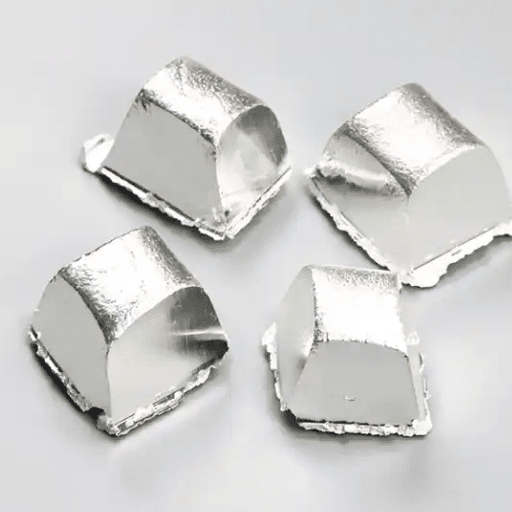
Timeless Elegance
Sterling silver has a luxurious and sophisticated appearance that goes both hand in hand with and at the same time, is liked very much in jewelry, decorative things, and tableware along with being always the top choice on them all, since it has that quality of being perfect in any era and to any design.
Versatility in Styling
The shiny and neutral look of sterling silver has made it possible to be used in combinations of different kinds of gemstones, finishes, and metals, thus it opened up a whole new world of designs for instance, among others discussed here.
Customizable Details
The softness and pliability of sterling silver make it possible to create very elaborate and unique custom designs with engravings and filigree being among the most common applications.
Lustrous Finish
The shine that sterling silver produces when polished is not only brilliant and radiant but also full of life, making it a kind of element that can be used to impart luxury to any piece of jewelry, thus contributing to its aesthetic appeal.
Wide Range of Applications
The sterling silver, because of its stylish and sophisticated look, is not only found in elegant jewelry but also in very fine and sometimes even extravagant household items, and is therefore considered as a highly adaptable material across different kinds of industries.
Styles of Stainless Steel Jewelry
Classic Polished Finish
The stunning and timeless look of stainless steel jewelry is usually characterized by a smooth and polished finish. This type of jewelry is very adaptable and can be worn for both casual and formal events.
Brushed or Matte Finish particular finish is a lot less visible, a non-reflective surface that is very popular for minimalist or modern designs. The brushed finish for fine jewelry adds depth and character while keeping the diamonds very durable.
Black Stainless Steel DesignBlack-coated stainless steel jewelry has a very bold and edgy look achieved through ion plating or other surface treatments. This jewelry style is very much in demand among modern and alternative fashion trends like urban and punk aesthetics.
Two-Tone StylesMixing stainless steel with other metals like gold or rose gold plating results in a very dramatic two-tone effect. This look is not only luxurious but also very economical for making intricate and eye-catching designs.
Textured or Patterned DesignsOne can also find stainless steel jewelry with patterns engraved on them, hammered textures, or even unique motifs that define the character of the wearer. These designs not only augment the visual attraction but also provide an opportunity for personalization or make a statement piece.
Attractiveness of Sterling Silver Jewelry
Timeless Elegance
Silver jewelry has always been a favorite due to its elegance that never goes out of style. Besides, it goes well with every type of attire, either modern or traditional, thus it is a good pick for various events.
Affordability Compared to Precious Metals
Sterling Silver, besides its low price, offers the same shine and elegance as the expensive metals, platinum or white gold. Thus, it is within the reach of more and more people.
Durability and Longevity
Sterling silver jewelry, when taken care of correctly, is very durable. Its tough makeup allows for daily use without the loss of its brightness for many years.
Hypoallergenic Properties
The alloys used with sterling silver are usually very low in reactivity, and thus it is the metal that most dermatologists recommend for patients with sensitive skin or metal allergies.
Endless Design Possibilities
The pliability of sterling silver enables the craftsmen to come up with very complicated and very finely detailed designs, from simple and minimalist to eye-catching and rich in decorations, thus the needs of the various styles are being met.
Silver vs Stainless Steel: Visual Appeal
In the case of silver versus stainless steel, I see silver shining with its unstoppable beauty throughout time because of its inherent luster and warmer color tone. It brings a classic, expensive, and universal appearance that works nicely with both types of attire—casual and formal. On the contrary, stainless steel got an up-to-date and futuristic feeling with its shiny, cold finish. Though both are beautiful in their own unique way, silver wins my heart with its adaptable quality and the way it gets to be more characterful over the years if looked after well.
References
- An Investigation into the Practical Application of New Sterling Silver Alloys
Santa Fe Symposium – A detailed study on the applications and properties of sterling silver alloys. - The Sulfidation Process of Sterling Silver in Different Corrosive Environments
Nature – Research on the effects of corrosion on sterling silver and its surface films. - Architectural Metals: A Guide to Selection, Specification, and Performance
Google Books – A comprehensive guide on the selection and performance of metals, including stainless steel.
Frequently Asked Questions (FAQ)
What are the pros and cons of stainless steel and sterling silver jewelry?
When comparing stainless steel and sterling silver jewelry, both materials have their pros and cons. Stainless steel is durable, resistant to scratches, and does not tarnish easily, making it ideal for everyday use. However, some may find it less valuable than sterling silver, which is a precious metal composed of 92.5% pure silver and 7.5% alloy, typically copper. Sterling silver can tarnish and requires regular maintenance but is often preferred for its luster and classic appeal.
Is stainless steel or sterling silver better for everyday use?
For everyday use, stainless steel is often considered the better option due to its durability and resistance to corrosion and scratches. It is ideal for active lifestyles and can withstand daily wear without losing its shine. On the other hand, sterling silver, while beautiful, may require more care to prevent tarnish and scratches, making it less practical for constant wear.
How does the durability of stainless steel compare to sterling silver?
Stainless steel is significantly more durable than sterling silver. It is less prone to dents, scratches, and tarnishing, which means stainless steel jewelry can maintain its appearance over time. Sterling silver, while also durable, is softer than stainless steel and may show signs of wear and tear more quickly, especially in intricate designs.
Are stainless steel jewelry pieces hypoallergenic?
Yes, stainless steel jewelry is often hypoallergenic, making it suitable for individuals with metal allergies. Many stainless steel items are made with nickel-free alloys, reducing the risk of allergic reactions. In contrast, sterling silver may contain trace amounts of copper, which can cause allergic reactions in sensitive individuals.
What types of jewelry are available in stainless steel and sterling silver?
Both stainless steel and sterling silver offer a wide range of jewelry types, including necklaces, bracelets, earrings, and rings. Stainless steel jewelry tends to be more modern and sleek, while sterling silver pieces often feature intricate designs and a classic aesthetic. Both materials can complement any jewelry collection.
How do the values of silver vs stainless steel compare?
Silver is considered a precious metal and generally holds a higher value than stainless steel. The value of silver can fluctuate based on market conditions, but sterling silver is typically more expensive than stainless steel due to its composition as a precious metal. In contrast, stainless steel is more affordable and widely used for its durability and low maintenance.
Can stainless steel jewelry be repaired easily compared to sterling silver?
Yes, stainless steel jewelry is generally easier to repair than sterling silver. Due to its strength and durability, stainless steel can withstand repairs without losing its shape or integrity. Sterling silver, while repairable, may require more careful handling to avoid damaging its delicate components, especially in intricate designs.
What are the differences between sterling silver and stainless steel in terms of maintenance?
Maintenance for stainless steel jewelry is minimal, as it does not tarnish and can be cleaned with mild soap and water. In contrast, sterling silver requires regular polishing with silver polish to maintain its luster and prevent tarnishing. Users should store sterling silver pieces properly to reduce exposure to air and moisture, whereas stainless steel is more forgiving in storage conditions.


